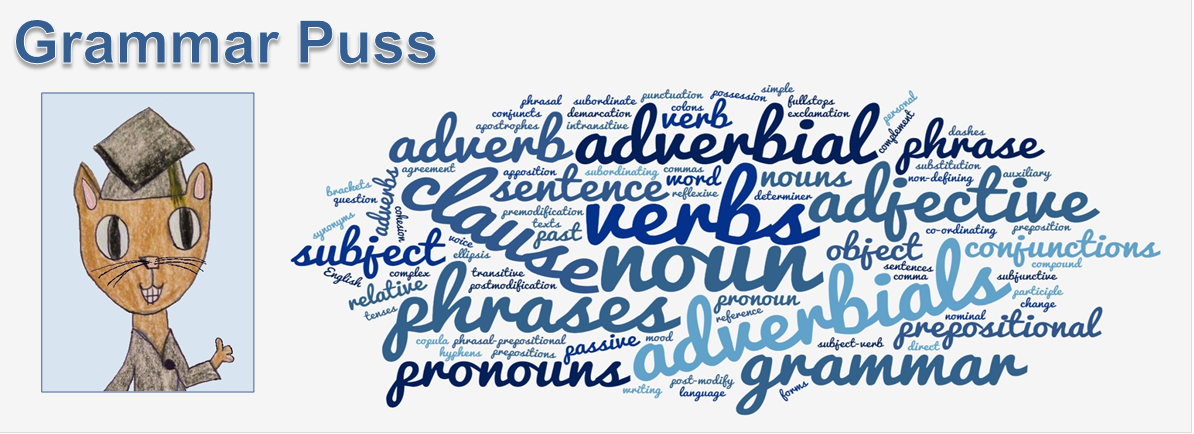Relative clause
This type of clause gives extra information about a person,
thing or place, or defines exactly which person or thing you are talking about. It comes immediately after a noun (so forms
part of the noun phrase) and needs a main clause to make a complete sentence. When the clause adds additional information,
it is enclosed in commas; when it defines or identifies the main noun, commas
should not be used.
Examples
The girl who is
standing in the corner of the playground is called Sue.
The man who was
playing the trumpet stopped for a moment.
The kitten, which was
black and white, was stuck in the tree.
She was married to an Italian whom she had met on holiday.
The idea that really
grabbed me was to write a poster.
The above examples use finite verbs, but sometimes the
relative pronoun and verb can be omitted to make a non-finite relative clause,
e.g.
The girl standing in
the corner of the playground is called Sue.
The man playing the
trumpet stopped for a moment.
Relative clauses form part of the noun phrase; if the noun phrase is being substituted by a pronoun, the whole phrase, including the relative clause, needs to be subsitituted.
The girl who is
standing in the corner of the playground is called Sue.
She is called Sue.
Because relative clauses follow a noun and are part of the noun phrase, they are often embedded in a sentence, but they can also occur in other positions.
The man who was
playing the trumpet stopped for a moment. Here the noun phrase containing the relative clause is in the subject position in the sentence, so the relative clause is embedded inside the sentence.
She was married to an Italian whom she had met on holiday. Here the noun phrase containing the relative clause is in the object position, so the relative clause is at the end of the sentence.

No comments:
Post a Comment